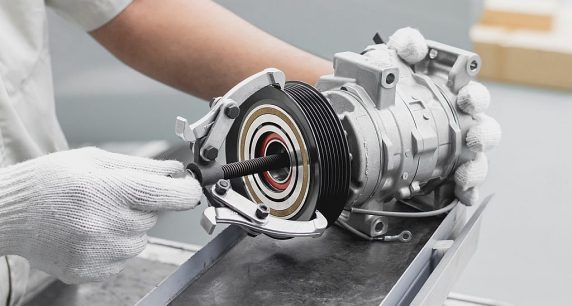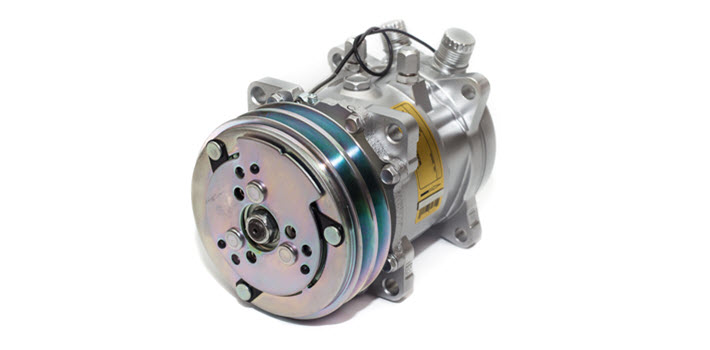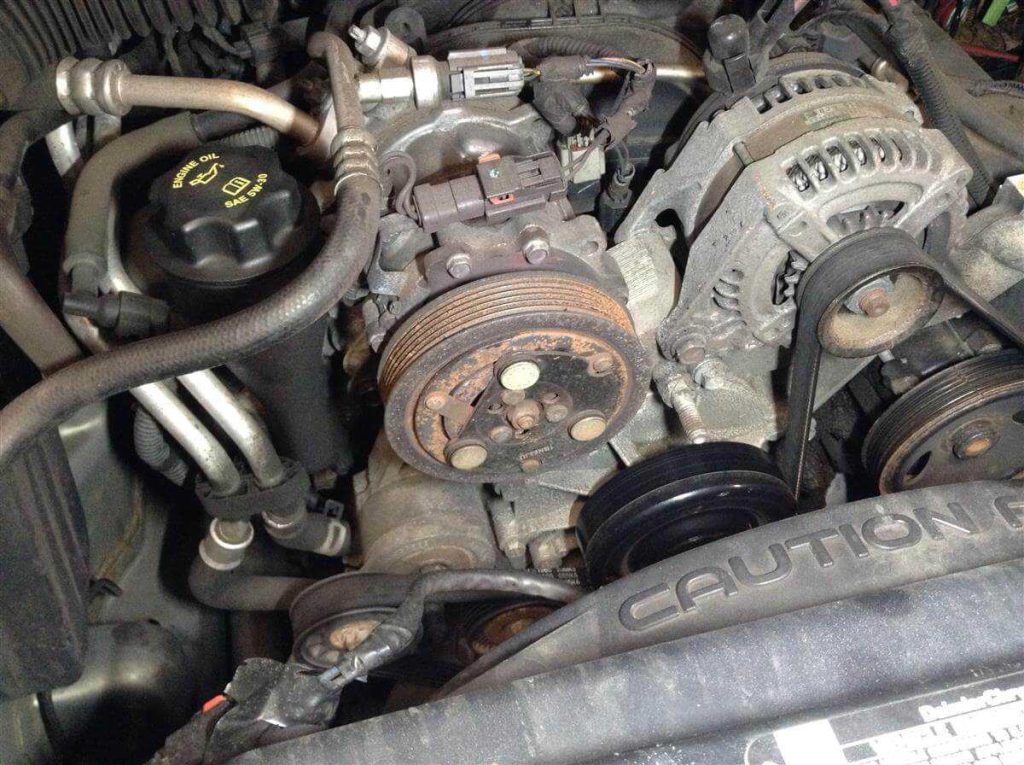Role of the AC Compressor in Your Car

While your vehicle’s air conditioning (A/C) system is comprised of different elements, the A/C compressor serves as one of the central parts that creates the system’s necessary cycle. Without it, your entire A/C system will be unable to perform its main function of creating cool air inside the vehicle.
Its primary role is to put the necessary amount of pressure on (compress) the car’s refrigerant in order to activate its heat-transfer characteristics and change temperatures. This enables you to remain cool in the warmer months and have a clear windshield in the colder months. In this article, we delve deeper into the role your A/C compressor plays in your vehicle’s air conditioning system.

A/C COMPRESSOR PARTS AND VARIATIONS
The compressor is comprised of the following parts:
- Housing which contains the compressor’s section, oil fill, and valves
- Connecting points used for refrigerant pipe connections
- Pulley with electromagnetic (EM) clutch
There are different types and variations of compressors, including:
- Variable or fixed swash plate (the most common)
● Reciprocating
● Rotary (spiral and vane)
● Electrically-driven (used in hybrid vehicles)
HOW THE A/C COMPRESSOR WORKS
To begin with, it is important to understand the relationship between your A/C compressor and refrigerant. Freon is a commonly used refrigerant which is a kind of fluid that essentially makes cold air out of hot air. This refrigerant and the compressor are a vital duo that works in conjunction with each other. Your car’s engine propels the A/C compressor in its main role of compressing the refrigerant used to absorb the heated air inside the cabin of your automobile.
As mentioned above, the most commonly used A/C compressor is the swash plate type. A pulley and V-belt drives the compressor which is attached to the vehicle’s engine block. As you switch on the A/C system, an electromagnetic clutch sets the belt drive in motion. The swash plate oscillates six double-ended pistons that are responsible for intake as well as compression. Note that the amount of refrigerant flow is controlled by reed valves. A thin mist of oil then circulates and mixes with the refrigerant to provide proper lubrication to the moving parts.
Next, the A/C compressor takes in gas from the refrigerant through the evaporator, causing pressure to drop. Lowered pressure causes the refrigerant to evaporate at a low temperature before the A/C compressor takes that cold vapour and compresses it. During this compression, the refrigerant gas is warmed and pushed into the condenser through pipes. Here, it re-liquefies and emits heat before moving into an area in order to cool. The refrigerant then absorbs heat from the passenger compartment. It is returned to a gas state in the evaporator before it is sucked in by the A/C compressor.
MAINTAINING YOUR A/C COMPRESSOR

Thankfully, maintenance of your A/C compressor is rather minimal and includes the following:
- Regularly use the compressor in order to keep all of the elements of the system properly lubricated.
- Charge your refrigerant to ensure the proper levels of pressure in the air conditioning system.
- Clean and tighten the drive belts as necessary.
- Perform electrical checks on the switches and sensors, as well as the EM clutch’s fuse, relay, and coil.
The most common reasons that an A/C compressor will fail are wear-and-tear due to age or neglect. If you experience a compressor failure, you will need to replace it. It is important to remember that if you use one that has been re-manufactured, you need a recovery machine in order to protect your atmosphere while extracting the refrigerant. Note that while you can replace certain EM clutches, there are some that are replaced only as an assembly, as with all motor-driven compressors.



